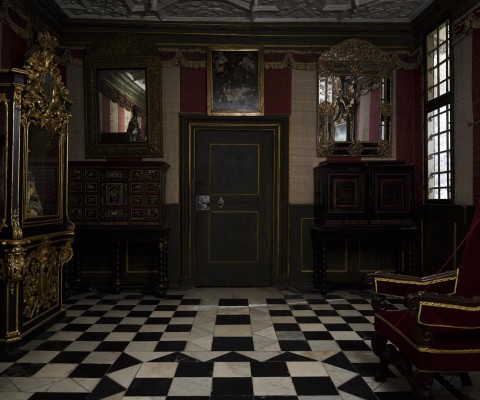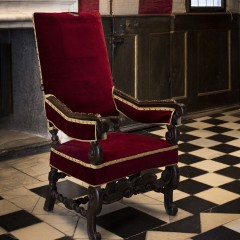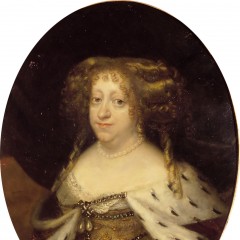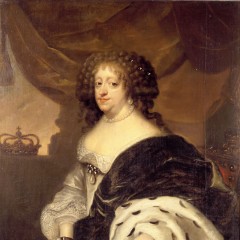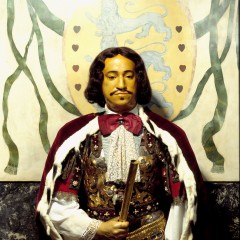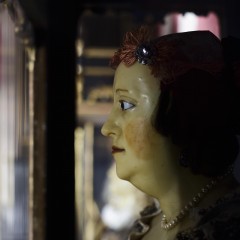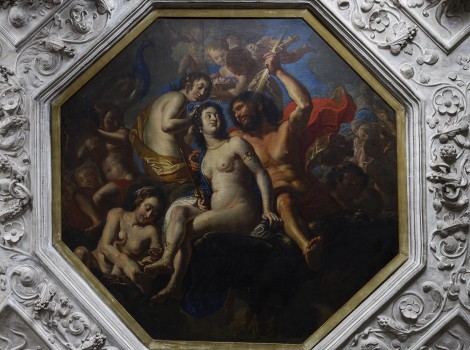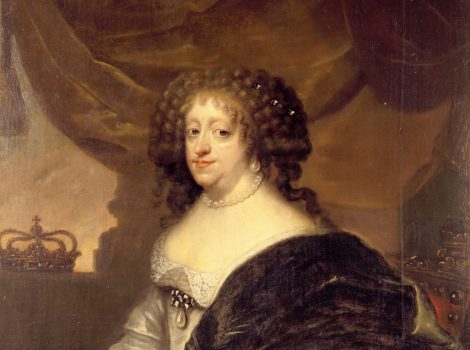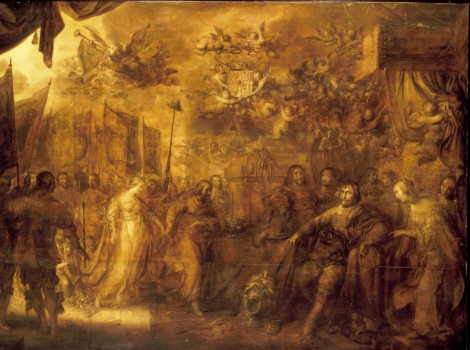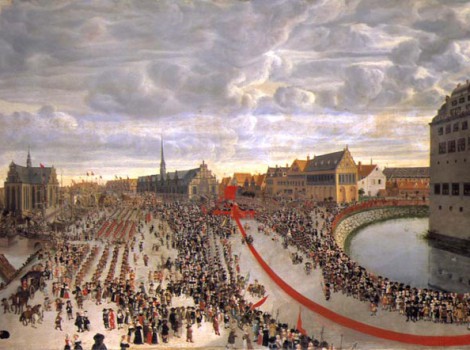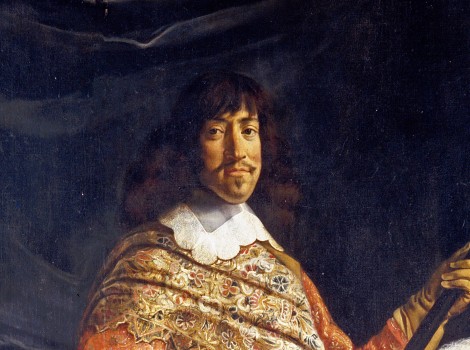4: The Dark Room
This room was originally connected to the Stone Passage and served as an antechamber dividing the King’s apartments from those of the Queen at the south end of the palace. In 1616 the room lost direct daylight following the building of the Great Tower, where Christian IV installed his bathroom with running water. In 1705 it became the bedchamber of the King and Queen.
The stucco ceiling was made by Valentin Dresler from Schmalkalden in connection with the building of the room. The fireplace with mirror and the silk tapestries date from the reign of Frederik IV. The striped tapestries with scalloped pelmets and tassels were probably inspired by the designs of the Dutchman Daniel Marot for the decoration of the stately homes of the time.
The armchair, which dates from the 17th century, was ingeniously constructed to hold down a guest with the use of securing devices, concealed in the armrests. The strapped person could then be soaked by water running from vessels in the back of the chair through pipes in the seat. When the victim was released and stood up from the chair, a trumpet hidden in the seat would toot.

 Dansk
Dansk
 English
English
 Deutsch
Deutsch

